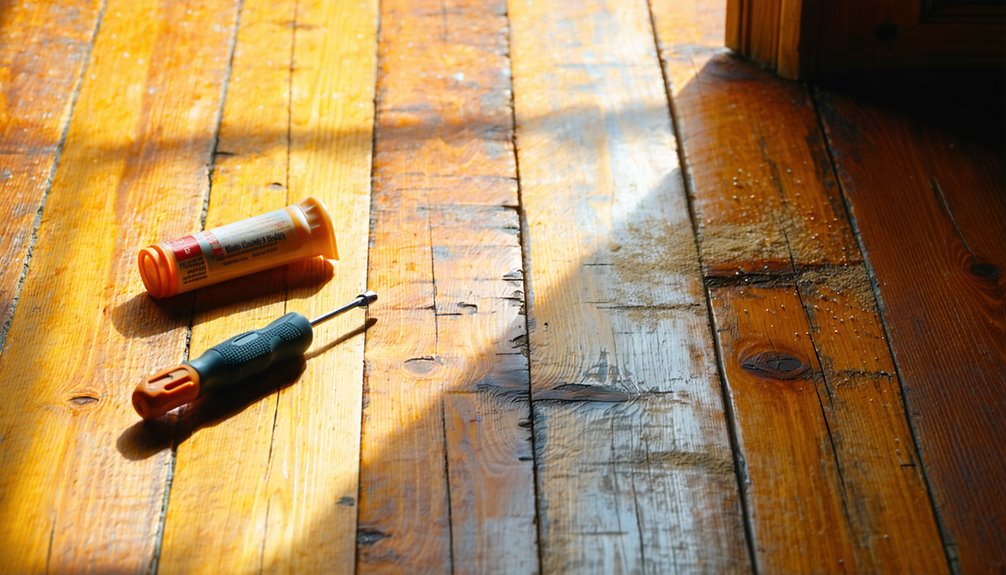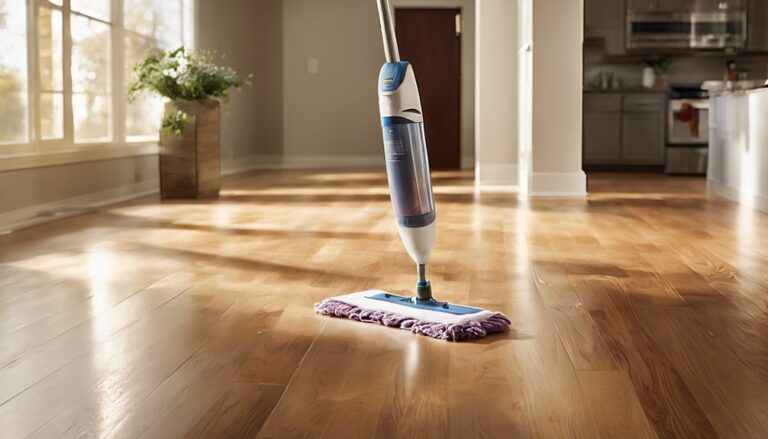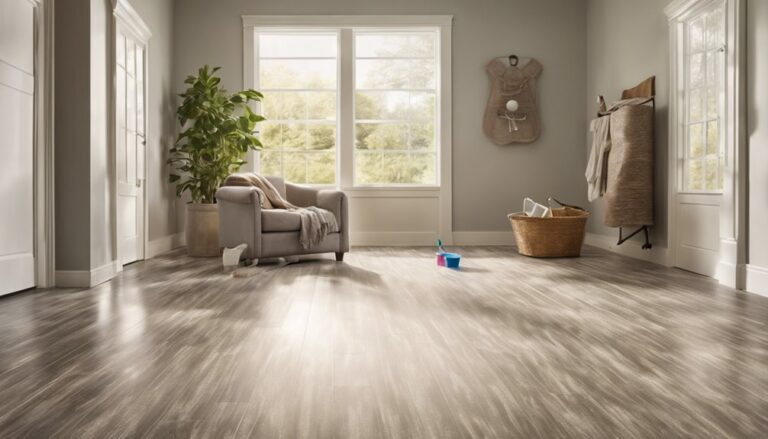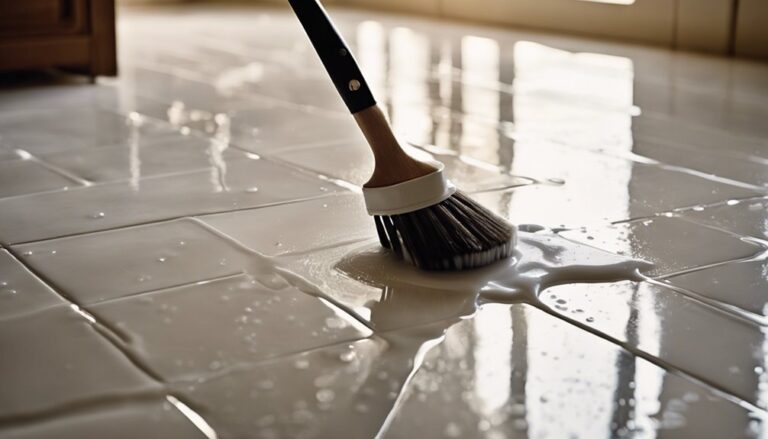To stop your floor from squeaking, start by identifying the source. Walk around and listen for the noise; it could be loose boards or gaps. Once you locate the problem spots, consider applying lubricants like graphite powder or silicone spray directly to those areas. If the squeaks persist, reinforce your floor joists with blocking or use screws instead of nails for better support. Installing anti-squeak products can also help. If you're still struggling, don't hesitate to call a professional for expert assistance. There's more to learn about effective solutions that can make a difference in your home!
Identify the Source of Squeaks
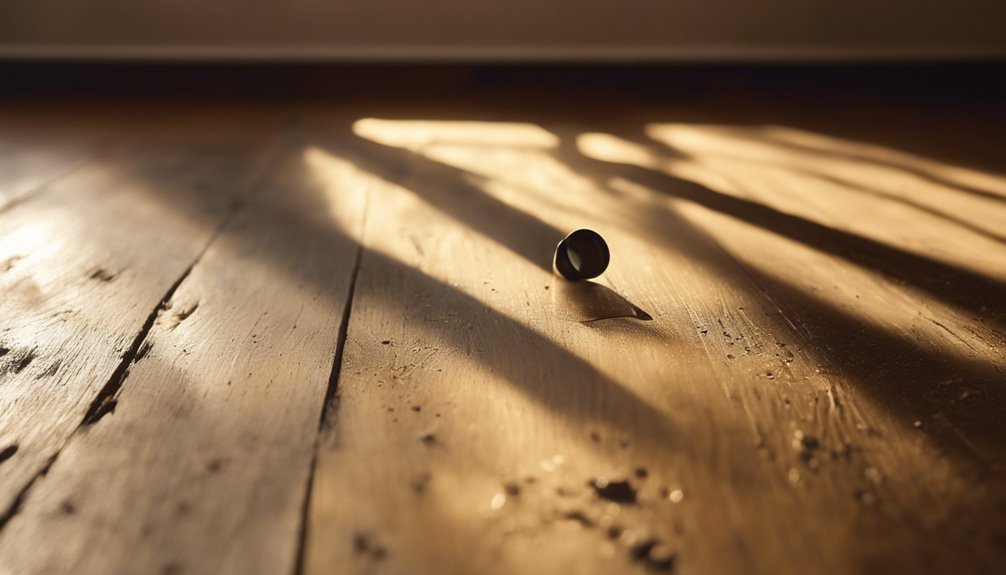
Before you can effectively stop your floor from squeaking, you first need to identify the source of the noise. Start by walking around the area, paying attention to different floor materials. Is it hardwood, laminate, or carpet? Each type can react differently. Listen closely; the squeaks might come from loose boards, nails, or gaps between the materials. Inspect the subfloor as well, as inadequate sound insulation can contribute to the issue. Check for any signs of wear or movement. Once you've pinpointed the areas that are causing the noise, you'll be better equipped to address them. Remember, understanding the root cause is vital to finding a lasting solution, so take your time in this significant step.
Use Lubricants to Reduce Noise
If you've identified the squeaky spots in your floor, using lubricants can be an effective way to quiet them down. For squeak prevention, you can choose from various lubricant types, like graphite powder, silicone spray, or even wax. Simply apply your chosen lubricant directly to the squeaky area, ensuring it seeps into the cracks between the boards or joists. This will help reduce friction and noise. You don't need to overdo it; a little goes a long way. After application, walk over the area to check for improvement. If the squeaking persists, it might be time to explore other solutions, but lubricants are a great first step toward reclaiming the peace and quiet in your home.
Reinforce Floor Joists and Boards
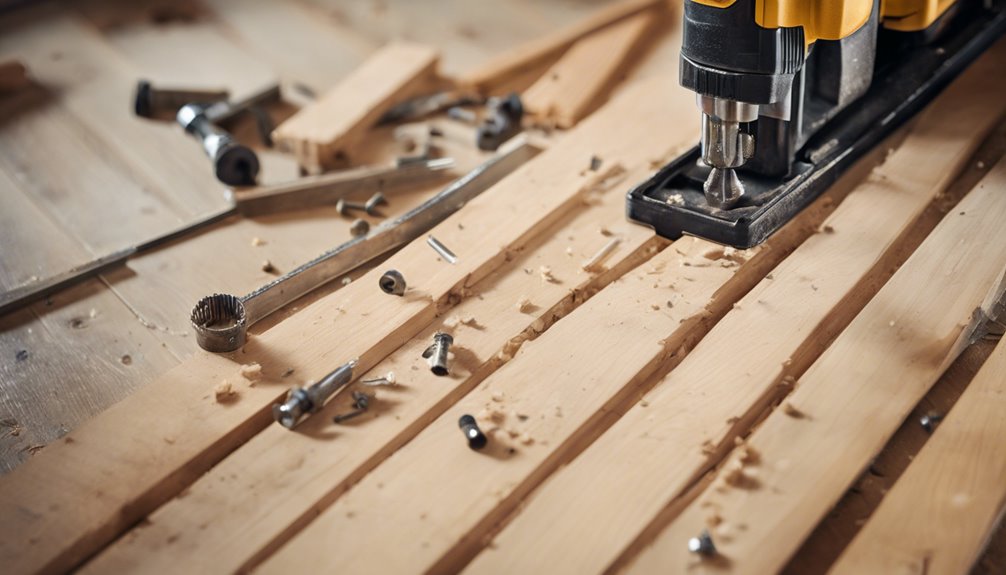
Reinforcing floor joists and boards can greatly eliminate those pesky squeaks plaguing your home. By focusing on joist reinforcement and board stabilization, you can enjoy a quieter, more comfortable living space. Here are some practical steps to contemplate:
- Inspect joists for damage or wear
- Add blocking between joists for support
- Use screws instead of nails for secure fastening
- Apply adhesive to joints for added stability
- Contemplate adding a beam for extra support
Taking these actions not only reduces noise but also strengthens your floor's structure. You'll reclaim the freedom to walk around without the constant creaks. With a little effort, your home can become a peaceful retreat where squeaky floors are just a distant memory!
Install Anti-Squeak Products
After bolstering your floor joists and boards, consider taking your squeak-fighting efforts a step further by installing anti-squeak products. These solutions can enhance the overall product effectiveness of your floor's stability. From specially designed screws to adhesive strips, there's a variety of options to explore.
Here's a quick overview:
| Tipo de producto | Descripción | Effectiveness Level |
|---|---|---|
| Squeak-Stop Screws | Tightens loose floorboards | Alto |
| Powdered Graphite | Lubricates friction points | Moderado |
| Adhesive Strips | Reduces movement | Variable |
| Noise-Reducing Mats | Cushions feet and muffles sound | Alto |
Choose the right anti-squeak solutions that fit your needs, and reclaim the peace of your home!
Consider Professional Help
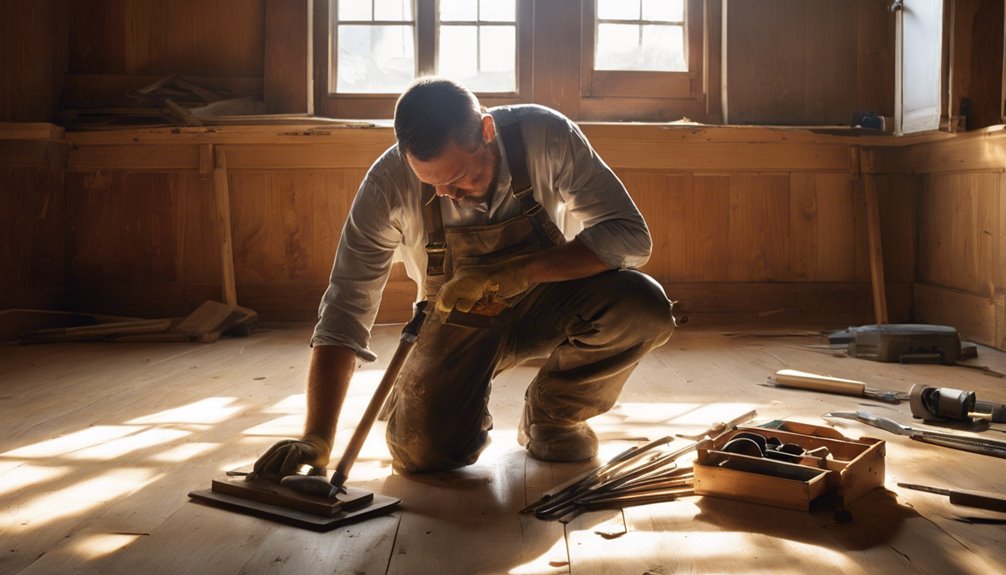
While tackling squeaky floors on your own can be rewarding, sometimes it's best to contemplate professional help to guarantee a lasting solution. A professional assessment can pinpoint underlying issues that you might overlook.
Here are a few reasons why seeking expert advice can be beneficial:
- They have the right tools and techniques to address the squeaks effectively.
- Professionals can identify structural problems beyond just the piso.
- They offer warranties or guarantees on their work, providing peace of mind.
- Your time is valuable; hiring helps you avoid frustration and trial-and-error.
- Experts stay updated on the latest methods, ensuring high-quality service.
Preguntas frecuentes
Can Humidity Levels Affect Floor Squeaking?
Did you know that about 30% of homes experience issues related to humidity? Humidity levels can definitely affect floor squeaking. When moisture levels rise or fall, it can cause your flooring materials to expand or contract, leading to those annoying sounds. To maintain your floors, effective humidity control is essential. Regular flooring maintenance, like checking for gaps and ensuring proper humidity levels, can help minimize squeaking and keep your home comfortable.
Are Certain Floor Types More Prone to Squeaking?
Absolutely, certain floor types are more prone to squeaking. Hardwood floors, while beautiful and durable, can develop squeaks due to their natural expansion and contraction with humidity changes. Laminate floors, on the other hand, may also squeak if not installed correctly, especially if there's inadequate underlayment. To keep your space serene, consider these factors when choosing your flooring and guarantee proper installation to minimize those pesky sounds and maintain your freedom of movement!
How Often Should I Check for Squeaks?
Did you know that nearly 60% of homeowners experience squeaky floors at some point? To keep your home in top shape, you should incorporate checking for squeaks into your maintenance schedule. Ideally, do it every six months, especially if you notice increased squeaking frequency during seasonal changes. Regular inspections help you catch issues early, allowing you to enjoy your living space without the distraction of annoying floor noises. Your freedom from squeaks starts with proactive care!
Can Furniture Placement Impact Floor Noise?
Absolutely, furniture arrangement can impact floor noise. When you place heavy furniture on squeaky areas, it can help distribute weight and reduce movement, leading to less sound. Additionally, incorporating rugs or soft furnishings can enhance sound absorption, minimizing noise from footsteps. So, if you're looking to create a quieter space, consider how you arrange your furniture. It's a simple yet effective way to improve your home's comfort and tranquility.
Is Squeaking a Sign of Structural Problems?
You might wonder if that annoying squeak is a sign of deeper issues lurking beneath your feet. While squeaking can simply be caused by loose floorboards or friction, it can also indicate problems affecting your floor's structural integrity. If the noise persists, it's worth investigating further. Regular maintenance and ensuring everything's tightly secured can help you maintain your space, giving you the freedom to walk without the worry of hidden damage.

